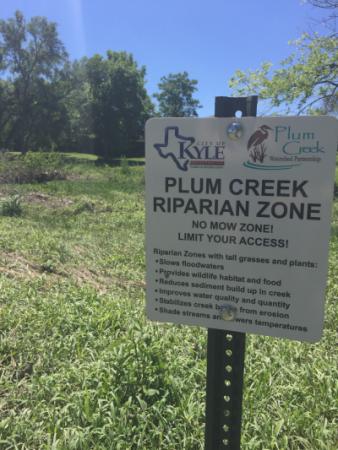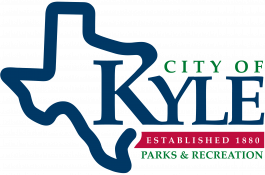Don't mow those weeds!
Walk along Plum Creek in Steeplechase Park these days and you’ll likely see areas thick with weeds and an overgrowth of tall grasses. You may wonder where are the Kyle Parks maintenance folks and why aren’t they mowing??
But then you might notice a sign that says ‘Plum Creek Riparian Area No Mow Zone!’
Tim Cropley, the city’s Parks & Facilities Manager, explains.
“Riparian zones help slow down soil erosion along the creeks,” he said. “This is a deliberate effort to prevent some of the issues we saw during heavy rain events over the past few years.”
According to “Your Remarkable Riparian Owners Manual,” riparian areas have been referred to as ‘ribbons of gold’ as a way of communicating their great worth. Author Steve Nelle said, “Those who own or manage land adjacent to creeks or rivers should understand their responsibility for conservation and sustainable management of these special resources.”
In October 2015, Kyle received 17 inches of rain in about a 24-hour period. That amount of water overwhelmed local creeks and rivers. The water at Lake Kyle was in the parking lot of the PARD headquarters building on Lehman Road. A lot of debris, such as branches and soil, washed downstream on Plum Creek, causing blockages.
“We knew we needed to take a look at our creeks and try to prevent further erosion,” Cropley said.
In the past, PARD staff would bring in the mowers and cut back the tall grasses along Plum Creek in Steeplechase Park. The current overgrowth of weeds, grasses and trees along the creek has been cultivated over nearly two years. And while it may seem as though the PARD staff merely just ignores the area, the opposite is true.
Chris Chapa and Ronnie Esparza gave a walking tour of the Riparian zone, showing where they do and don’t mow or trim. The area between the tall grasses and the rest of the park is separated by well-maintained grass.
“We mow and trim the park grass next to the Riparian area to try to keep snakes and other critters from coming into the park,” Chapa said. He said they also planted additional grass in one section to help keep soil from sliding into the creek.
And if they find trees that need trimming, they will use branches from those trees as stakes in the creek to help prevent more erosion. Staff will of course remove debris from the water if it impedes the flow of the creek.
It’s all part of a conscious effort to allow the banks of Plum Creek in that park to flow freely while also keeping an eye on erosion prevention.
“Our residents enjoy our parks and we aim to keep them beautiful while also working to protect the native vegetation and landscape, thereby helping to prevent more damage to the creek banks,” Cropley said.





